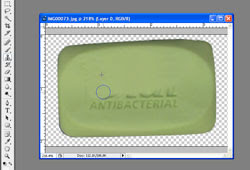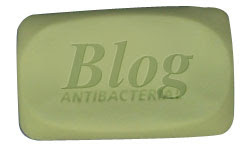Market your fine art via the Internet with social networking websites, blogs & other social media
There has never been a better time than the present to market yourself as a fine artist.
Today's technology combined with the Internet offers unparalleled opportunities for you to harness and have your fine art seen by millions of viewers every day! With tons of networking options and sales tools at your finger tips, now is the time to get out there and have your talents noticed.
As a fine artist, you probably are an introvert, slightly on the neurotic side, and overall, a bit of an existentialist to begin with. But being a fine artist chances are you also have great, substantial ideas and important things to say to the world. Well, it is your turn to be heard!
In today's very populated society there are thousands of other fine artists waiting to be heard also. The Lancaster, Pennsylvania area alone churns out 100(s) of artists a year from the 4-5 art schools and universities in its surrounding area. I would guesstimate that within central PA and Philadelphia there are 1000(s) of fine artists to compete with. And the fact is, there are not enough jobs and galleries to sustain this abundant supply... so you do the math.
So you are left with choices like: changing career fields just out of school (while you are probably still paying your student loans); making your fine art a thing on the side while working in retail or another non-ideal field; or getting smart and creative about how you market yourself while sticking with your chosen path as an artist. The final choice wins here!
So today I'd like to discuss the newest craze in networking yourself - it is called social media.
It is a bit of an evolution from web 2.0 (with a bit more of the personal factor thrown in). AKA social networking, social media encompasses everything from blogs (like this one), to personal pages that are easy to add pictures, videos and other media to, to websites specifically for networking, sharing ideas and keeping in touch with your many contacts.
I've done a good bit of research on social media as it is a natural extension of successful SEO - search engine optimization. I have consulted several organizations in the central Pennsylvania area on SEO techniques. Chances are my search skills are what brought you here today.The foremost option of social networking is blogging. I highly recommend
blogger.com. The fact that Google acquired this pioneering blogger platform was the no-brainer stamp of approval that I needed to choose where to invest my time and thoughts. Let's face it, Google is the king of search, the Internet and soon to come... most of your information.
After you start blogging, then there are several more ways to reinforce your social media start. There are easily 20-30 popular social media websites today.
Here is a list of social networking websites that I recommend you utilize to help market your fine art: facebook.com
facebook.com
Facebook is a social utility that connects you with the people around you.
 delicious.com
delicious.com
Delicious is a social bookmarking service that allows users to tag, save, manage and share web pages from a centralized source. With emphasis on the power of the community, Delicious greatly improves how people discover, remember and share on the Internet.
 flickr.com
flickr.com
Flickr - almost certainly the best online photo management and sharing application in the world.

linkedin.com
Share knowledge and tap into relationships. Connect the people in your professional network with LinkedIn.
 stumbleupon.com
stumbleupon.com
StumbleUpon discovers web sites based on your interests. Whether it's a web page, photo or video, our personalized recommendation engine learns what you like, and brings you more.
 digg.com
digg.com
Digg is a place for people to discover and share content from anywhere on the web. From the biggest online destinations to the most obscure blog, Digg surfaces the best stuff as voted on by our users.
 jaiku.com
jaiku.com
Jaiku's main goal is to bring people closer together by enabling them to share their activity streams.

kirtsy.com
kirtsy is the place to find and/or link to anything and everything on the Web that you'd like to share.

plaxo.com
Connect to your family, friends, and business network. We make it easy to find who you know.
 reddit.com
reddit.com
Submit a link » to anything interesting: news article, blog entry, video, picture...
 tumblr.com
tumblr.com
Called Tumblelogs - Tumblr is a simple microblog platform. A place to aggregate your thoughts, images and videos. And you can import your stuff from other social media sites like twitter and flickr.
Every day more social networking sites spring up. These are the ones that I have found to work nicely together.
YouTube, of course, would be the place to be with your videos.
Myspace, in my opinion, is growing a bit out of favor and has a too much of a collective, overall messy look-and-feel for what I'm shooting for.
Good luck to you as you go forward with your fine art social media plan and I'm sure to see you on page 1 soon!
























